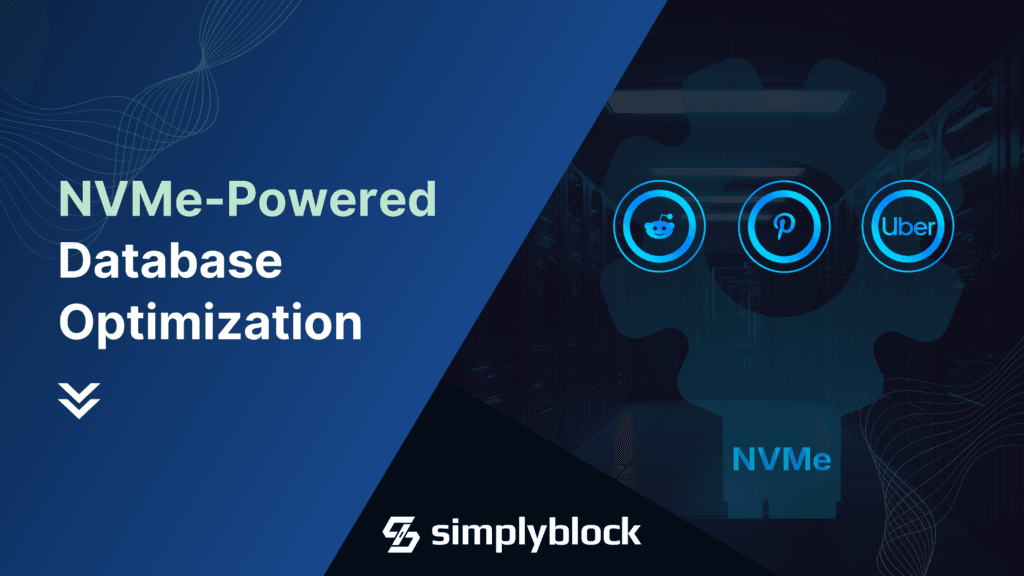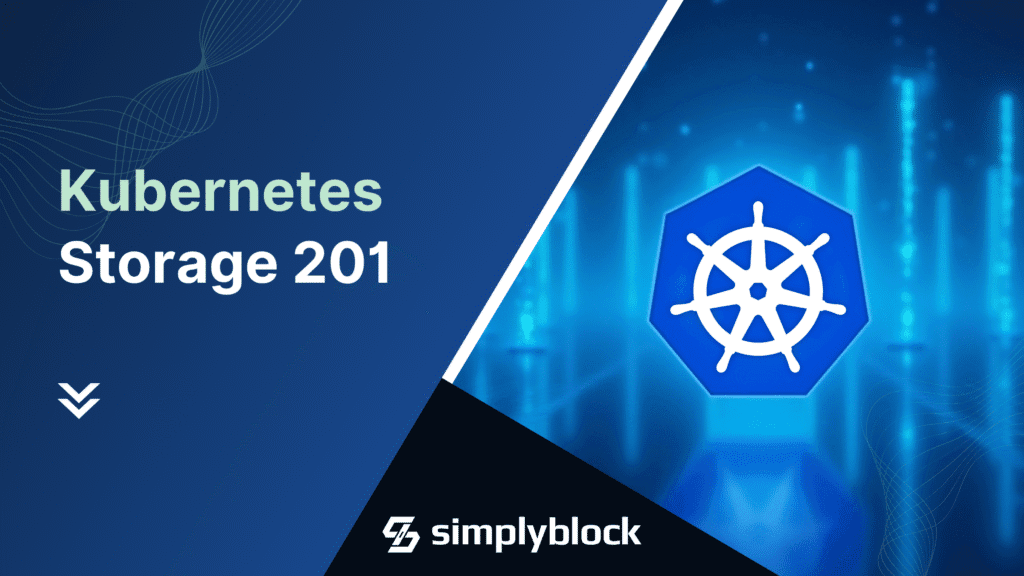Origins of simplyblock and the Evolution of Storage Technologies
Sep 20th, 2024 | 4 min read

Introduction:
In this episode of the simplyblock Cloud Commute Podcast, host Chris Engelbert interviews Michael Schmidt, co-founder of simplyblock. Michael shares insights into the evolution of storage technologies and how simplyblock is pushing boundaries with software-defined storage (SDS) to replace outdated hardware-defined systems. If you’re curious about how cloud storage is transforming through SDS and how it’s creating new possibilities for scalability and efficiency, this episode is a must-listen.
This interview is part of the simplyblock Cloud Commute Podcast, available on Youtube, Spotify, iTunes/Apple Podcasts, and our show site.
Key Takeaways
What is simplyblock, and how does it Differ from Traditional Storage Technologies?
Michael Schmidt explained that simplyblock is built on the idea that hardware-defined storage systems are becoming outdated. The traditional storage models, like SAN (Storage Area Networks), are slow-moving, expensive, and difficult to scale in cloud environments. Simplyblock, in contrast, leverages software-defined storage (SDS), making it more flexible, scalable, and hardware-agnostic. The key advantage is that SDS allows organizations to operate independently of the hardware lifecycle and seamlessly scale their storage without the limitations of physical systems.
How does simplyblock Offer better Storage Performance for Kubernetes Clusters?
Simplyblock is optimized for Kubernetes environments by integrating a CSI (Container Storage Interface) driver. Michael noted that deploying simplyblock on Kubernetes allows users to take advantage of local disk storage, NVMe devices, or standard GP3 volumes within AWS. This integration simplifies scaling and enhances storage performance with minimal configuration, making it highly adaptable for workloads that require high-speed, reliable storage.
In addition to highlighting the key takeaways, it’s essential to provide context that enriches the listener’s understanding of the episode. By offering this added layer of information, we ensure that when you tune in, you’ll have a clearer grasp of the nuances behind the discussion. This approach helps shed light on the reasoning and perspective behind the thoughtful questions posed by our host, Chris Engelbert. Ultimately, this allows for a more immersive and insightful listening experience.
Key Learnings
What are the Advantages of Software-defined Storage Compared to Hardware-defined Storage?
Software-defined storage offers flexibility by decoupling storage from physical hardware. This results in improved scalability, lifecycle management, and cost-effectiveness.
Simplyblock Insight:
Software-defined storage systems like simplyblock allow for hardware-agnostic scalability, enabling businesses to avoid hardware refresh cycles that burden CAPEX and OPEX budgets. SDS also opens up the possibility for greater automation and better integration with existing cloud infrastructures.
What is Thin Provisioning in Cloud Storage?
Thin provisioning allows cloud users to allocate storage without consuming the full provisioned capacity upfront, optimizing resource usage.
Simplyblock Insight:
Thin provisioning has been standard in enterprise storage systems for years, and simplyblock brings this essential feature to the cloud. By offering thin provisioning in its cloud-native architecture, simplyblock ensures that businesses can avoid over-provisioning and reduce storage costs, only paying for the storage they use. This efficiency significantly benefits organizations with unpredictable storage needs.
Additional Nugget of Information
Why are SLAs Important in Software-defined Storage, and how does Simplyblock Ensure Performance Reliability?
Service Level Agreements (SLAs) are crucial in software-defined storage because they guarantee specific performance metrics, such as IOPS (input/output operations per second), latency, and availability. In traditional hardware-defined storage systems, performance metrics were easier to predict due to standardized hardware configurations. However, with software-defined storage, where hardware can vary, SLAs provide customers with a level of assurance that the storage system will meet their needs consistently, regardless of the underlying infrastructure.
Conclusion
Michael Schmidt’s discussion offers a fascinating look at the evolving landscape of cloud storage. It’s clear that simplyblock is addressing key challenges by combining the flexibility of software-defined storage with the power of modern cloud-native architectures. Whether you’re managing large-scale Kubernetes deployments or trying to cut infrastructure costs, simplyblock’s approach to scalability and performance could be just what you need.
If you’re considering how to future-proof your storage solutions or make them more cost-efficient, the insights shared in this episode will be valuable. Be sure to explore the simplyblock platform and stay connected for more episodes of the Cloud Commute Podcast. We’re constantly bringing in experts to discuss the cutting-edge technologies shaping tomorrow’s infrastructure. Don’t miss out!



